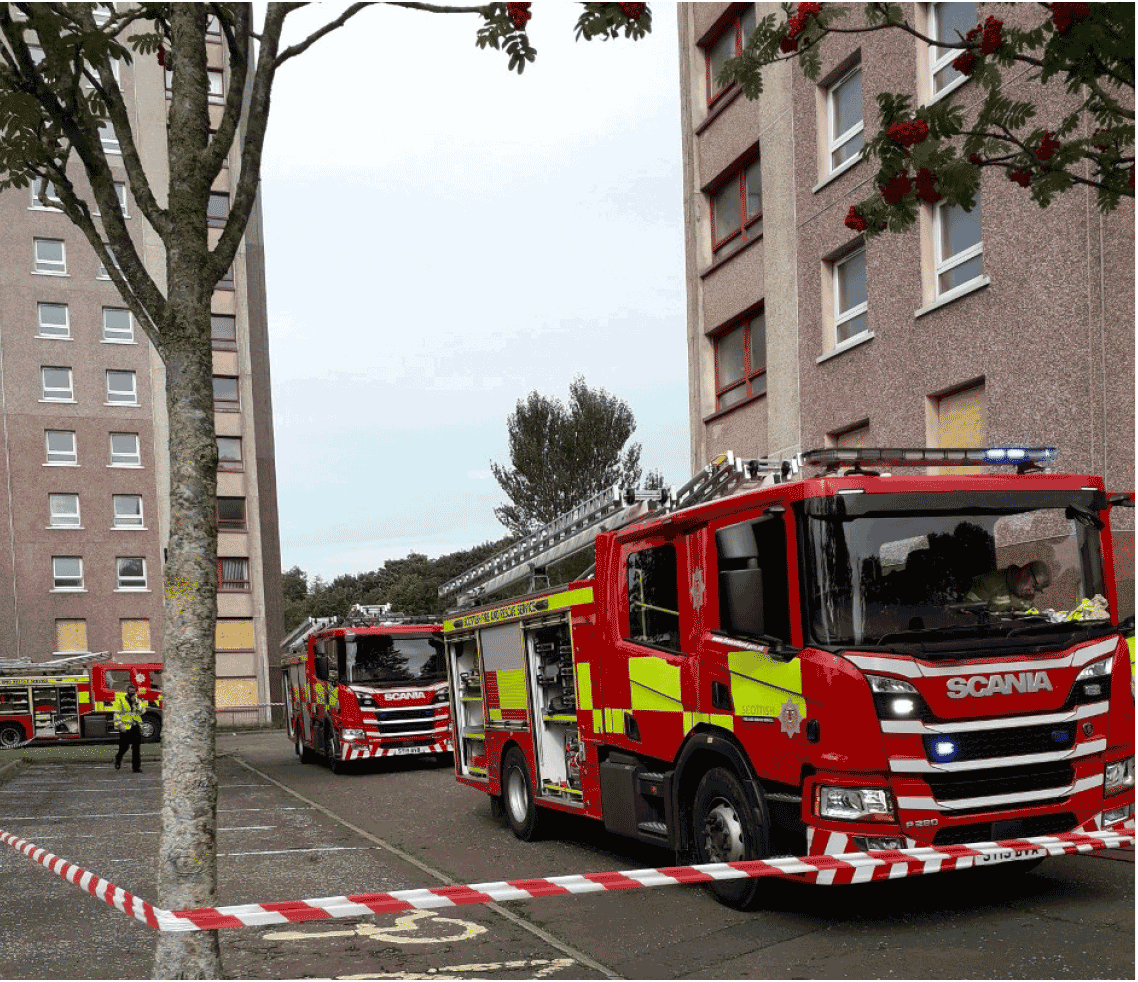High rise buildings - firefighting arrangements: report
Related Downloads
Training and Exercising

Source: HMFSI
148. New firefighter entrants to the Service receive technical and practical training on high rise firefighting which includes a physical visit to premises.
149. The SFRS made a substantial change to its ongoing training programme for firefighters in April 2022. Prior to this change, ongoing training of operational staff included a competence framework containing a number of modules to be undertaken at set frequencies. The programme was made up of:
- 12 core skills module to be completed over 12 months
- 12 standard modules to be covered over 36 months
- 24 advanced modules tailored to each station risk profile
150. One of the advanced modules was high rise firefighting and this was delivered on a three-year rolling programme in wholetime fire stations and in those RDS-crewed stations where the crew might be expected to form part of the attendance at a high rise incident.
151. LSOs were responsible for the programming of training in their area and this resulted in different schedules and a lack of consistency across the country regarding topics being covered at the same time. Among other things, this had an impact on the introduction of new or amended procedures.
152. In the new system, training topic scheduling is aligned across the country. Some of the former modules have been combined to create a single topic, reducing 36 modules down to 24. The high rise module has been subsumed into a new firefighting module with wider scope.
153. The programming of topics is undertaken on a quarterly basis by an Operational Competency Strategy Group (OCSG), following consultation with Directorates. The OCSG works six months ahead and, through consultation, will agree on what emerging risks, new equipment or procedures need to be covered.
154. Following on from its research, development and testing, the Service plans to introduce new procedures relative to building evacuation, smoke hoods and smoke curtains – each of which will be relevant to high rise firefighting. The new training system will allow these changes to be introduced in a more structured and efficient way than the previous system would have allowed.
155. Training packages for Operations Control staff and for Flexi Duty Officers are being reviewed to refresh them and align them with those intended for firefighters. The alignment of schedules will enable easier participation for those staff to form part of an exercise or training session.
156. The high rise SOP contains a general desire to conduct on-site exercises and describes the same as imperative. But there is little further guidance and no prescriptive expectation is offered in that document. Within the previous training programme, a simulated high rise exercise could be a 3-yearly event. Under the new system, LSO areas can decide how frequently high rise exercises are carried out, and this would be scheduled into the programme.
157. In one LSO area we visited, there are three high rise exercises undertaken per year, organised on a geographical basis.
158. Two of the SFRS's three training centres have a training building that can be used for simulated high rise training. There have been ad-hoc arrangements when the Service has taken the opportunity to hold an exercise in a high rise building which is unoccupied prior to demolition. The SFRS has also been undertaking high rise exercises to test and develop evacuation techniques.
159. Flexi Duty Officers are expected to undertake an incident command re-accreditation after three years. A range of incident scenarios are used as part of this process but there is not currently a scenario for a high rise fire; we were advised that the incident command assessment team have plans to develop such a scenario. A high rise scenario virtual table top exercise was trialled in September 2021. We spoke with a number of attendees and their experience was very positive in respect of the learning benefit.
